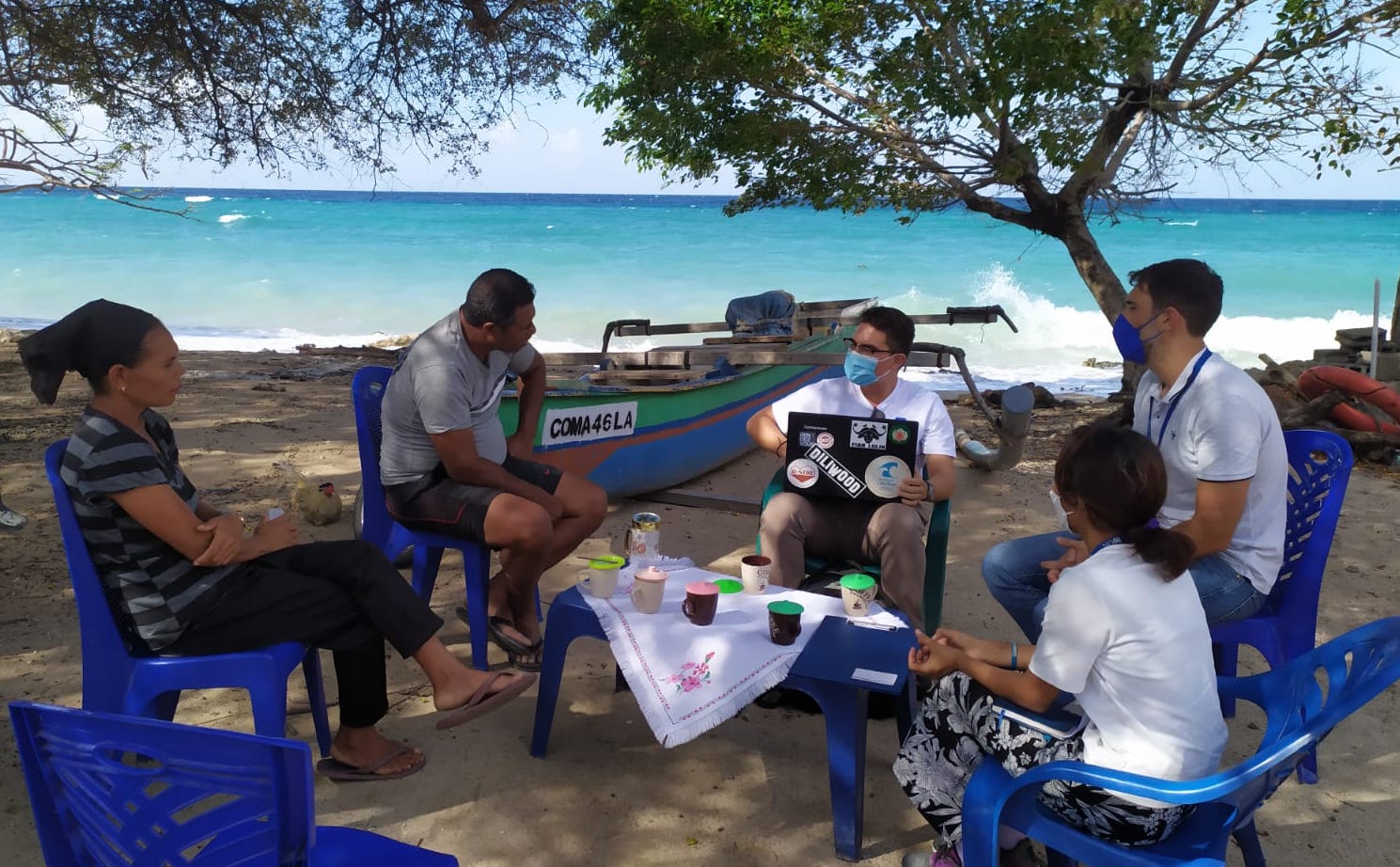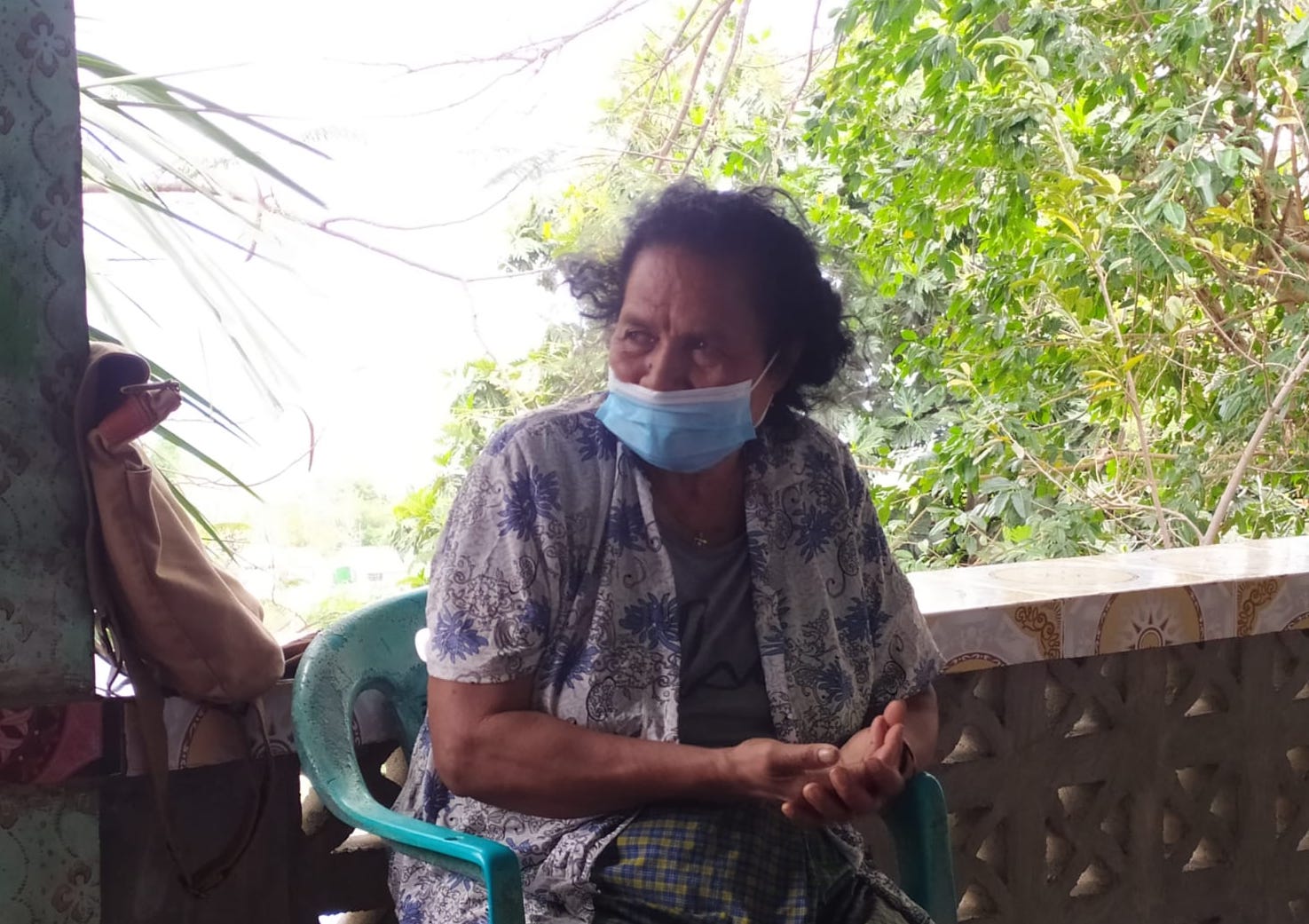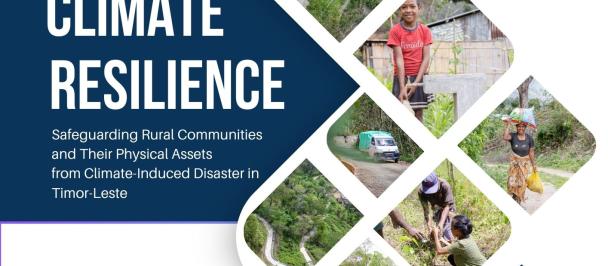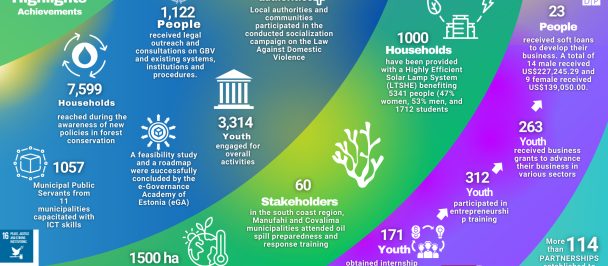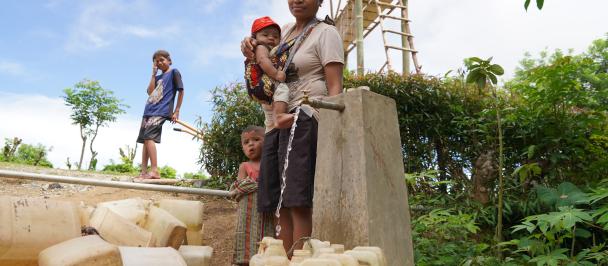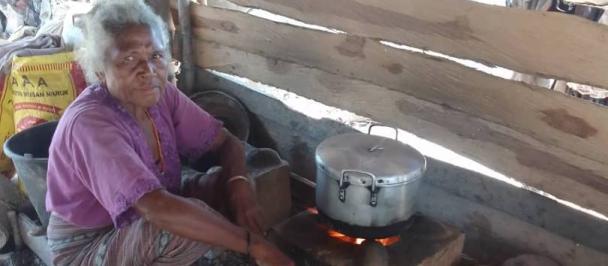SEIA-2: Bringing data to the fight against COVID-19 in Timor-Leste
General findings from the SEIA 2.0 and recommendations
December 1, 2021
Survey in Suco Com, Lospalos-Lautem
There’s a common saying that every crisis is also an opportunity. In Timor-Leste, the COVID-19 pandemic, and its social ramifications created an opportunity for the government and its development partners to conduct one of the nation’s most comprehensive data collection exercises in recent years – The United Nations’ second Socio-Economic Impact Assessment (SEIA 2.0).
Domestic travel restrictions and social distancing hit uniquely hard in a country with limited access to technological mitigations, widespread multidimensional poverty; heavy reliance on small-scale subsistence farming; and low economic resilience to cushion livelihood shocks.
Businesses like the Kiki Rey Kiosk at the Batugade border crossing with Indonesia typified some of the challenges faced during this time. After relocating and facing a lack of access to goods, trouble repaying loans, and decreased customer demand, owner Noviana Filomena Marques was forced to close her self-run kiosk.
Aware of the precarious positions of most Timorese, the Government of Timor-Leste launched an unprecedented US$ 333.2 million relief package, of which $228.5 million was specifically allocated for ‘social support and economic rescue to the population, affected by activities to prevent and fight the disease COVID-19. Beginning in May 2020, the package included cash transfers, emergency food distributions, wage subsidies, a credit moratorium, and electricity and water utility subsidies.
Early on in relief planning however, it became clear to government policy makers and the development community lacked accurate nation-wide data to guide their pandemic responses, and economic recovery plans – particularly in weighing the trade-offs between COVID-19 prevention and containment measures, and reducing the negative socio-economic impacts on businesses and households. In response the United Nations conducted an initial rapid socio-economic impact assessment, (SEIA 1.0) in June and July 2020 in five municipalities – Dili, Baucau, Bobonaro, Viqueque and RAOEA (Oe-Cusse).
To be as accurate as possible, SEIA 1.0 required an understanding of the circumstances of persons with pre-existing marginalization, inequalities and vulnerabilities which could be further exacerbated by the COVID-19 pandemic – relative to the conditions faced by the general population – and how those vulnerabilities could be pragmatically addressed. The assessment thus developed both social and wealth vulnerability indices which sought to understand each household’s position within the population.
The success of SEIA 1.0 saw the Ministry for the Coordination of Economic Affairs (MCAE), the General Directorate of Statistics (GDS) and United Nations collaborate to conduct a nationwide second SEIA (SEIA 2.0). Together, they trained 88 enumerators and supervisors, and 24 GDS staff who interviewed 4,292 households covering 23,362 people.
Led by UNDP Timor-Leste, SEIA 1.0 and SEIA 2.0 also assessed the impacts of COVID-19, government restrictions, and government economic recovery measures, on micro, small and medium enterprises (MSMEs) – interviewing 708 formal businesses and 378 informal businesses across all municipalities. The majority of businesses in Timor-Leste are micro enterprises, employing less than 10 people, often from within the same family.
SEIA 2.0 successfully attained both broad-scale and nuanced data disaggregated by location, gender, age and disability status. For example 77% of respondents were satisfied with the overall government COVID-19 response mixing health protection measures and economic recovery measures. However when looking into the detail of how communications and public awareness about COVID-19 and government measures, household’s wealth determined significant differences in how fast they received COVID-19 related information. The poorest households were more likely to receiving late information (24.5 % of poor households receive information late versus 2.8 % of the wealthiest households).
Households, especially the poorest and the most vulnerable households borne the economic effects of COVID-19. Nearly 40 % of individuals temporarily lost their jobs during the State of Emergency and many of them were able to get job again a year later; COVID situation prevented 16.3 % of working age men and 11.8 % of women to remain outside the labour market. Due to COVID-19, nearly one quarter of households reported increase in time spent on household chores such as cooking and cleaning, water collection, family care and shopping with an overwhelming effect on women.
SEIA 2.0 was also designed to disaggregate the impacts of Cyclone Seroja (Easter Flood) that hit Timor-Leste on April 4, 2021. SEIA 2.0 found that farmers were doubly affected by the cyclone, with 32.5 % of all agricultural households losing their standing crop or harvest and a loss of 5.1 % of livestock. Twin shock of COVID-19 and the Easter Flood affected the income for 79.5 % of all the working age individuals, regardless of their gender and wealth groups.
However, food insecurity was high during the one month before the interview (in July-August 2021) to 41.4 % of the population being affected by moderate or severe food insecurity. This reflects the agriculture sector’s weakness in responding to climate and economic shocks, despite being the main livelihood source for 66 % of Timorese.
Animals are a key asset and form of savings for both households and farmers in Timor-Leste. The majority (34.6 %) of households that faced food shortages or a lack of money, were forced to sell animals to cope, while 32.9 % of those who had savings, used them to buy food. In order to afford food, Timorese also commonly resorted to borrowing money (24.9 %) and spending less on education and health (20.5 %). This shows the vulnerable situation of most households in meeting their basic needs without substantial safety nets or social protections.
SEIA 2.0 also covered social disruptions caused by the pandemic and cyclone. This included understanding the intra-household inequalities and vulnerabilities as well as the gender-differentiated impacts of the COVID-19 pandemic. Lacking access to the digital learning tools available to advanced economies, 37 % of Timorese students did not continue regularly study in the 12 months between March 2021 and March 2021. Fifty percent of respondents said this was due to a lack of available printed materials.
The opportunity to conduct SEIA 2.0 has created a database that will inform policy development, not only in the recovery from the pandemic, but into the middle of this decade. It is however important to note that the effects of the COVID-19 crisis can be time-lagged. SEIA 2.0 completed data collection in early September 2021, with the effects of the pandemic and associated restrictions still largely active. Thus the longer-term impact of the COVID-19 response measures and implications for future recovery policies still need to be assessed. Accordingly the recommendations provided in SEIA 2.0 focus on both emergency related and general development policies to reduce multi-dimensional poverty and vulnerability to future shocks.
SEIA Full Report can be found here
>>>

 Locations
Locations